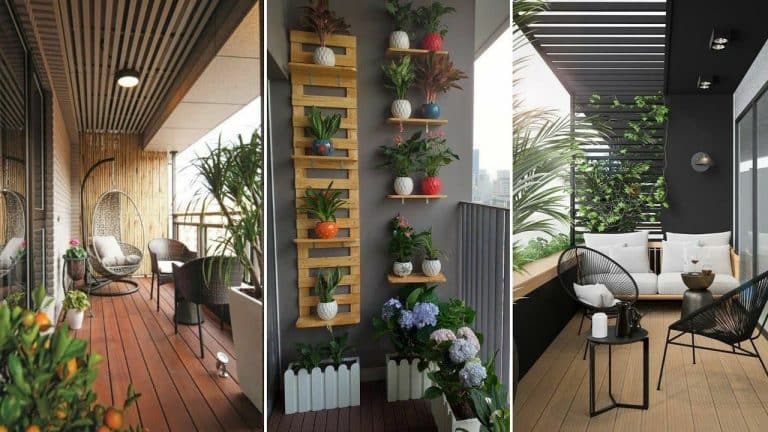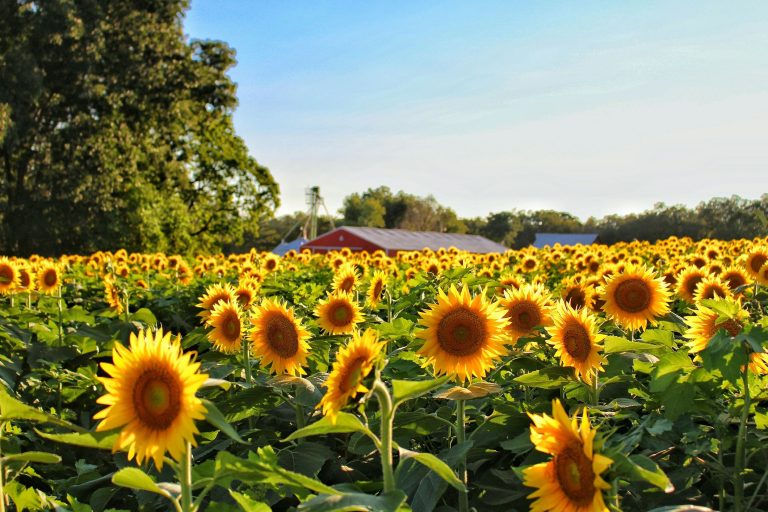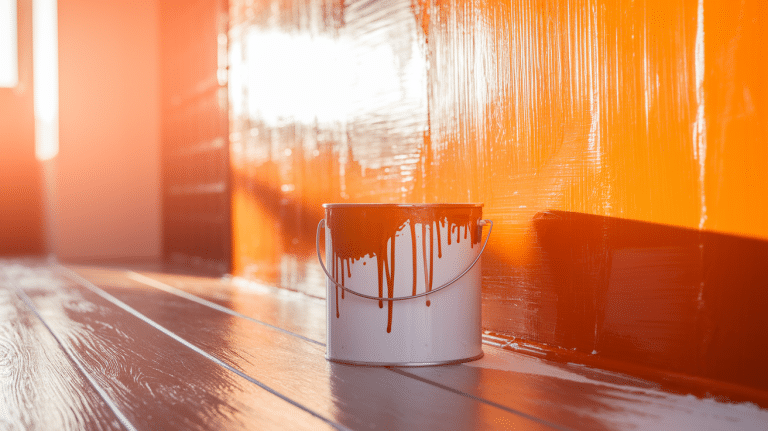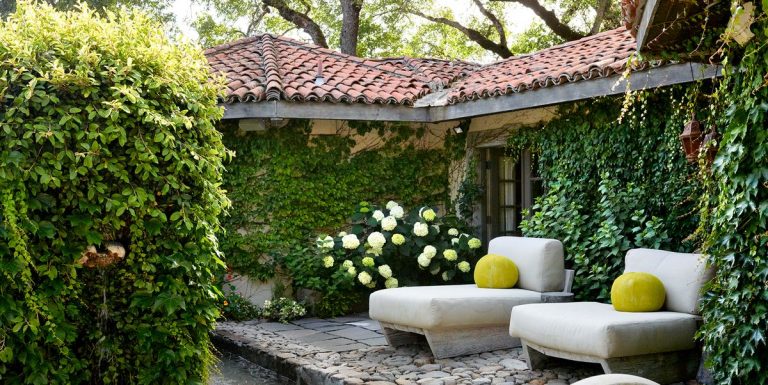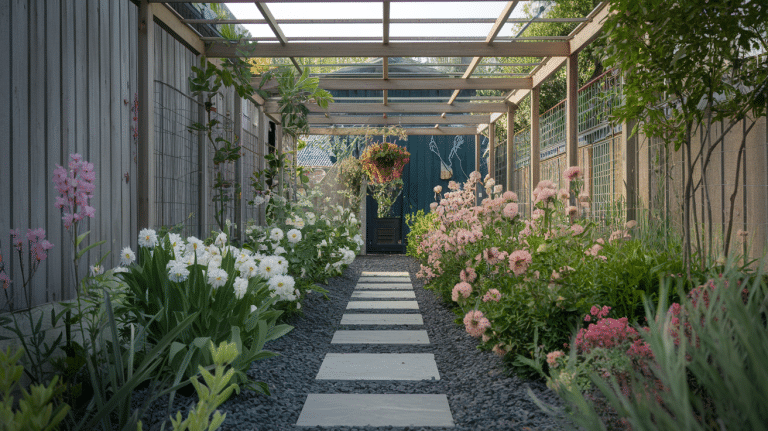Can Hydrangeas Grow Indoors
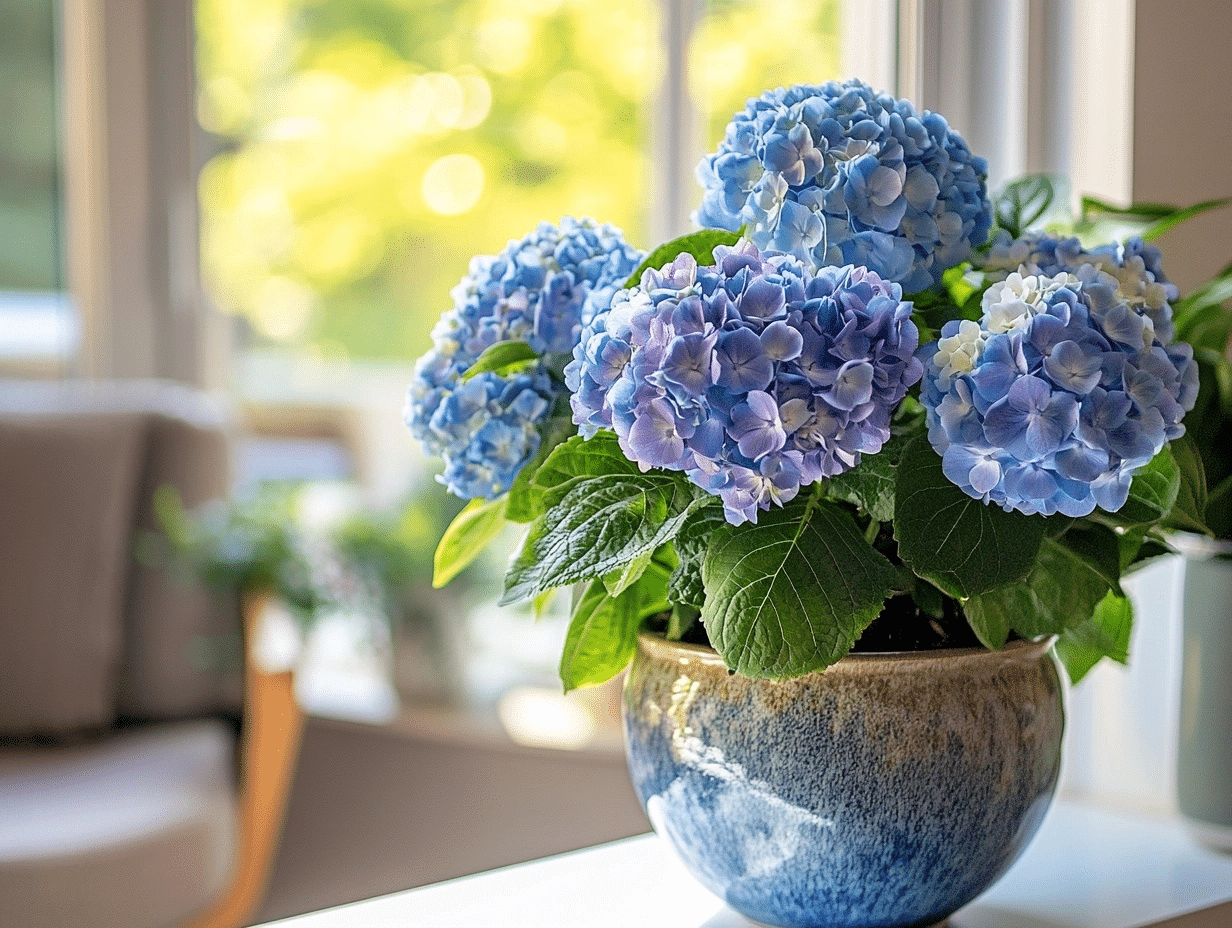
Are you fond of big, round flower clusters in shades of blue, pink, and white? Yes, it’s about Hydrangeas. These beautiful flowers catch many eyes in gardens with their pretty blooms.
Most people think of them as outdoor plants, but you might wonder if these lovely flowers can thrive inside your home as well.
This blog looks at the basics of growing hydrangeas indoors. You’ll learn what these plants need to do well inside your house.
Let’s explore what it takes to grow these classic flowers in your home.
Can Hydrangeas Grow Indoors
Many garden lovers wonder this while admiring these stunning plants in outdoor spaces.
But what happens when these plants come inside our homes? Is it even possible to grow these beautiful blooms as houseplants?
The world of indoor gardening opens up so many questions about these classic flowering plants. What kind of light would they need?
How about watering needs? And would they ever produce those same lovely flower heads that make people stop and stare in outdoor gardens?
Let’s find out what it takes to bring these garden favorites into our homes potentially!
Step-by-Step Guide to Grow Hydrangeas at Home
Many plant lovers are curious about bringing outdoor favorites inside. Hydrangeas present some special challenges when grown as houseplants. But with the right care, you might be able to enjoy their beauty year-round.
Below are the steps listed to grow Hydrangeas at home easily.
1. Choose the Right Hydrangea Variety
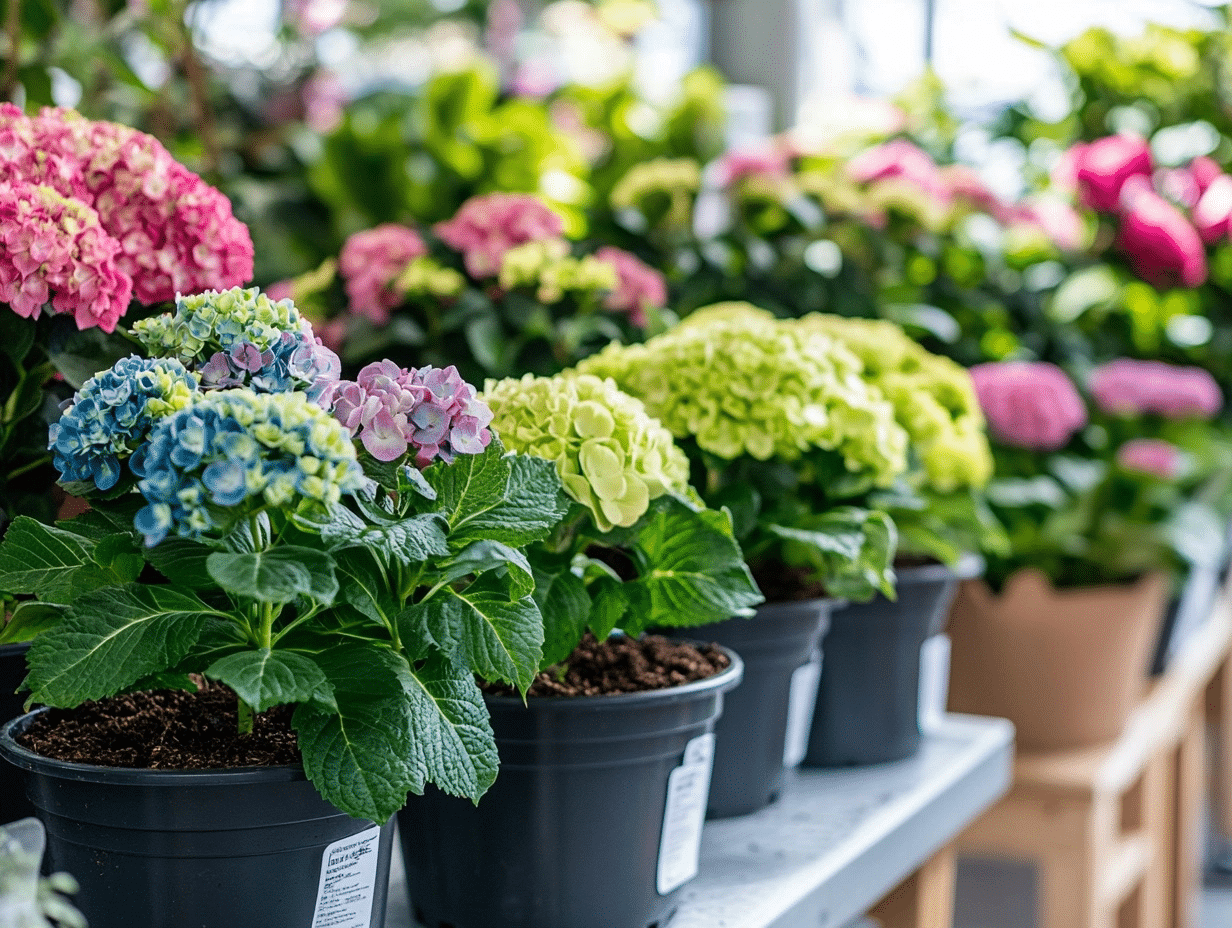
Select a hydrangea type that adapts well to indoor conditions. Smaller varieties tend to do better as houseplants than larger ones. Look for compact hydrangeas bred for container growing that will fit in your space.
- Look for varieties labeled as “dwarf” or “compact.”
- Consider reblooming types for longer-lasting flowers.
- Choose pot-friendly varieties like Cityline or Little Lime.
- Ask garden centers which types work best indoors.
- Check mature size to ensure it fits your indoor space.
2. Pick the Right Pot and Soil
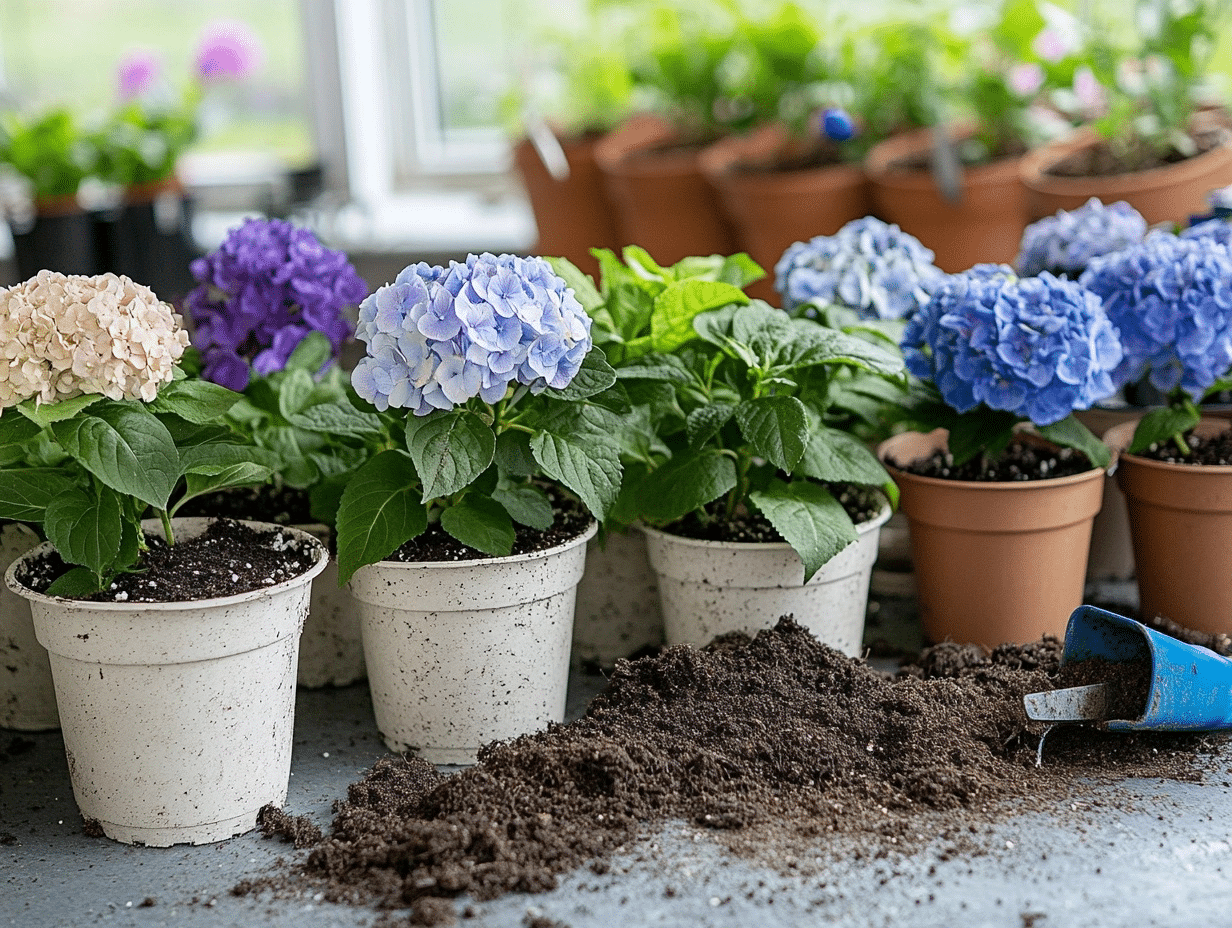
Your hydrangea needs a pot that allows proper drainage and growth. The soil mix should hold moisture but not stay soggy. The right container setup forms the foundation for healthy indoor hydrangeas.
- Select a pot 2-3 inches larger than the root ball.
- Ensure the pot has several drainage holes.
- Use a mix of potting soil and perlite for drainage.
- Add organic matter like compost to retain nutrients.
- Consider a pot with a water reservoir for consistent moisture.
3. Place Your Hydrangea in The Right Location
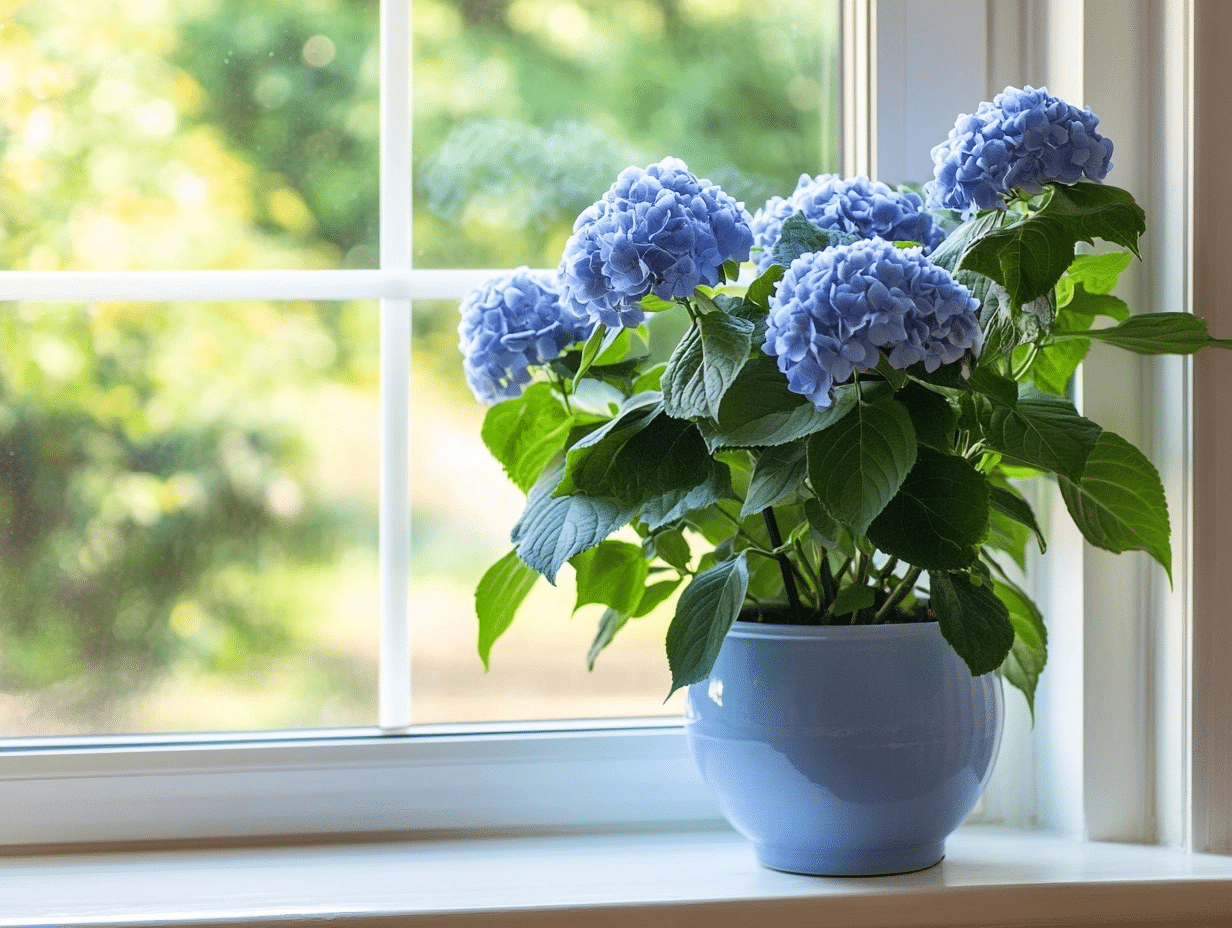
Hydrangeas need bright, indirect light to bloom well indoors. Too much direct sun burns the leaves, while too little light prevents flowering. Find the sweet spot in your home for these light-loving plants.
- Place near east or north-facing windows.
- Keep away from heating vents and cold drafts.
- Rotate the pot weekly for even growth.
- Avoid spots with hot afternoon sun.
- Maintain room temperature between 50-70°F.
4. Water and Maintain Humidity
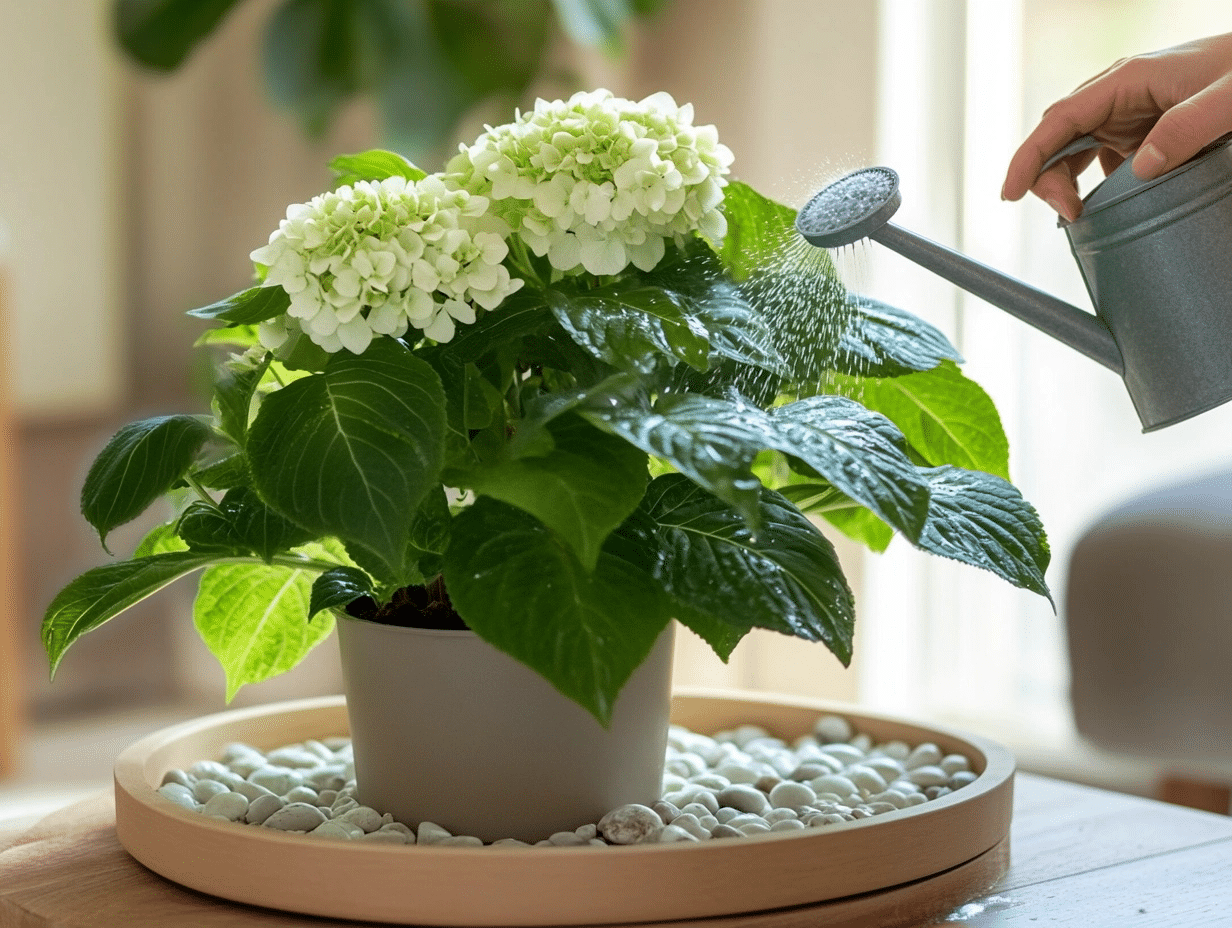
Hydrangeas need consistent moisture without being waterlogged. These plants also prefer higher humidity than most homes naturally have. Getting the water balance right keeps your plant happy and blooming.
- Water when the top inch of soil feels dry.
- Use room temperature water, not cold.
- Mist leaves regularly to increase humidity.
- Place the pot on a tray with pebbles and water.
- Water more during flowering and less during dormancy.
5. Prune and Fertilize as Needed

Regular pruning keeps indoor hydrangeas compact and encourages new blooms. Fertilizing provides nutrients that may be missing from potting soil. These care steps help maintain plant health and flowering.
- Remove spent flowers just below the bloom.
- Prune no more than one-third of the stems at once.
- Fertilize monthly during the growing season with balanced feed.
- Stop fertilizing in the fall and winter months.
- Cut back leggy growth to maintain shape.
6. Monitor for Issues
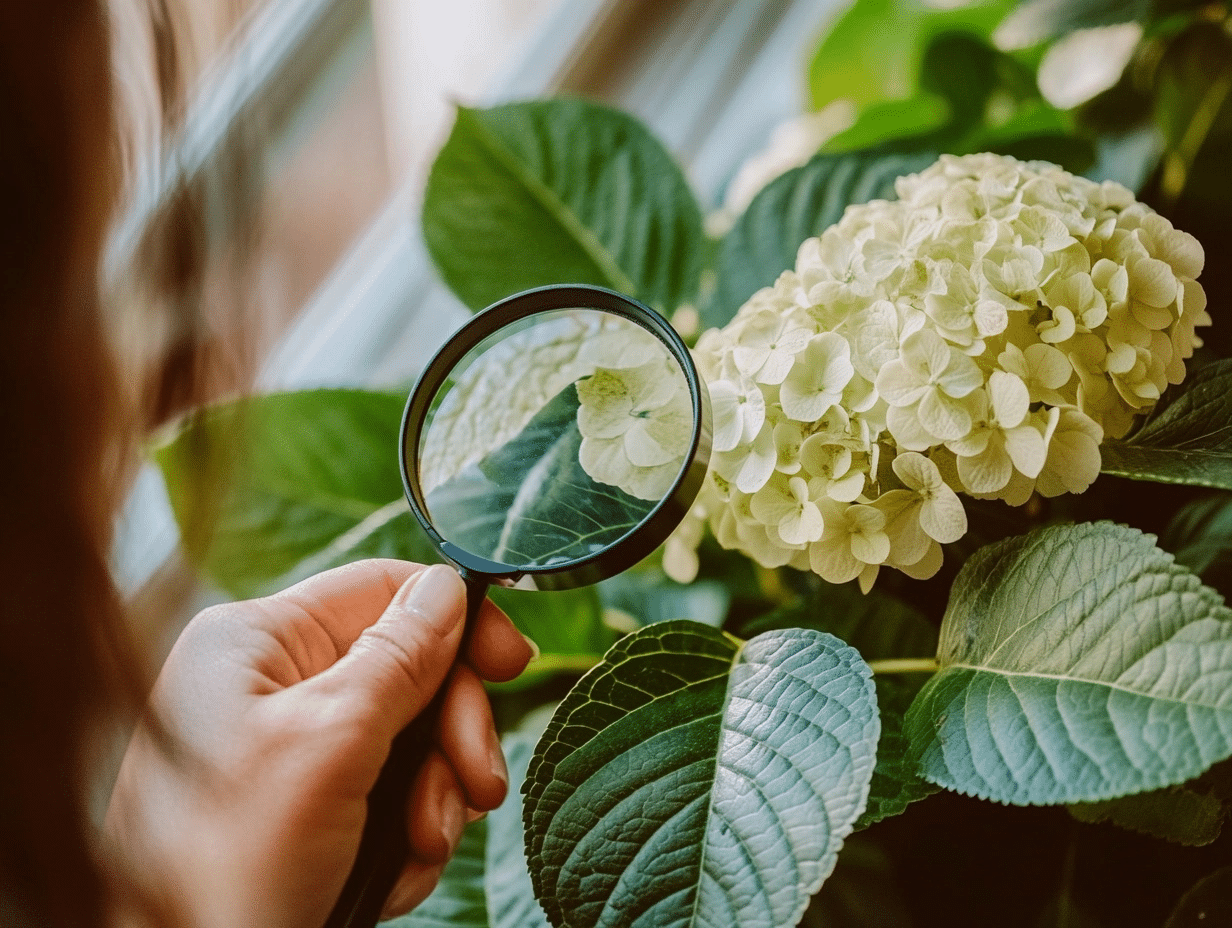
Indoor hydrangeas can face problems like pests, diseases, and environmental stress. Catching these issues early makes them easier to fix, and regular checks help keep your plant healthy and beautiful.
- Check leaves weekly for spots, discoloration, or pests.
- Look for signs of spider mites in dry conditions.
- Watch for yellow leaves, often a sign of overwatering.
- Monitor for powdery mildew in humid conditions.
- Adjust care if you notice drooping or leaf curl.
Ideal Conditions to Grow Hydrangeas Indoors
| Condition | Recommendation |
|---|---|
| Light | Bright, indirect light; avoid harsh afternoon sun; 4-6 hours of filtered light daily |
| Temperature | 65-70°F during day; 55-60°F at night; avoid temperatures above 75°F |
| Humidity | 60-70% humidity level; higher than average home humidity |
| Soil | pH 5.2-5.5 for blue flowers; 6.0-6.2 for pink flowers; neutral pH for white |
| Watering | Even moisture; water when top inch feels dry; never let soil dry completely |
| Container | Well-draining pot with 2-3 inches extra space around root ball |
| Airflow | Good air circulation without cold drafts; use gentle fan on low if needed |
| Seasonal Care | Period of cooler temps (50°F) in winter to encourage spring blooming |
List of Mistakes to Avoid While Growing Hydrangeas Indoors
- Overwatering the plant: Giving too much water leads to root rot and yellowing leaves. Many new hydrangea owners water on a fixed schedule rather than checking soil moisture.
- Using regular garden soil: Garden soil compacts in pots and doesn’t drain well, causing waterlogged roots and preventing proper air circulation.
- Forgetting about dormancy periods: Do not allow hydrangeas to have a cooler rest period in winter. Plants need this cycle to set buds for the next blooming season.
- Placing in direct afternoon sunlight: Strong direct sun burns the leaves and flowers. Morning light is gentler and better for these sensitive plants.
- Neglecting humidity needs: Dry indoor air causes brown leaf edges and stress. Many homes have humidity levels far below what hydrangeas prefer.
- Keeping rooms with temperature swings: Placing near doors or vents where temperatures change suddenly. These fluctuations stress the plant and can prevent blooming.
- Using too much fertilizer: Over-fertilizing burns roots and creates leggy growth. This common mistake often comes from trying to force more flowers.
- Ignoring early pest signs: Missing the first signs of spider mites or aphids. These pests multiply quickly and can seriously damage indoor hydrangeas before you notice.
- Keeping flowers past their prime: Do not remove spent blooms, which drains energy from the plant. Dead-heading encourages new growth and helps maintain plant health.
Best Hydrangea Variety to Grow Indoors
| Hydrangea Variety | Key Features | Indoor Suitability |
|---|---|---|
| Endless Summer | Blooms on both old and new wood, year-round flowers | Adapts to containers, moderate light needs |
| Cityline Paris | Compact size, vibrant pink blooms, holds color well | Perfect for indoor spaces, less pruning is needed |
| Mathilda Gutges | Deep blue to purple flowers (with correct soil pH), stays small | Responds well to consistent care indoors |
| Little Lime | Dwarf (3-5 ft), lime-green blooms | Tolerates indoor conditions better than most |
| Shooting Star | Unique star-shaped white flowers | Forgiving of light and temperature fluctuations indoors |
| Mini Penny | Small, fits on windowsills or tables, blue to pink flowers (soil pH dependent), reblooms | Ideal for tight indoor spaces, blooms multiple times a year |
| Let’s Dance Moonlight | Reblooming, flowers on old and new growth, rich blue blooms (with acidic soil) | Adapts well to container life |
| Buttons ‘n Bows | Double-flowered, textured pink blooms with white edges | Stays compact indoors, visually striking blooms brighten indoor spaces |
Summing It Up
Growing hydrangeas indoors brings the beauty of these classic garden flowers right into your home. With the right variety, proper care, and attention to their specific needs, you can enjoy those stunning blooms year-round.
So, what makes indoor hydrangea growing worthwhile? These flowers add a touch of garden charm to any room and allow you to experiment with different colors based on soil pH.
Their big, bold blooms make a statement that few other houseplants can match.
Remember that indoor hydrangeas may not grow as large as outdoor ones, but their more manageable size is perfect for indoor spaces.
If you’re ready to grow hydrangeas indoors, pick up a small plant from your local garden center and follow these tips.
Also, don’t forget to share your experience with indoor hydrangeas in the comments section below!
Frequently Asked Questions
How Long do Potted Hydrangeas Last?
With proper care, potted hydrangeas can live 3-5 years indoors. Some may last longer with regular repotting and ideal conditions. The blooming period typically spans 2-3 months each year.
Can I Bring My Potted Hydrangeas Inside for the Winter?
Yes, you can bring potted hydrangeas inside for winter. Please place them in a cool spot (40-50°F) with some light. Reduce watering, but don’t let them dry out completely.
Where You Should not Plant Hydrangeas?
Don’t plant hydrangeas in full shade, areas with poor drainage, spots with strong afternoon sun, or places with constant strong winds. Avoid locations near trees with competitive root systems.

